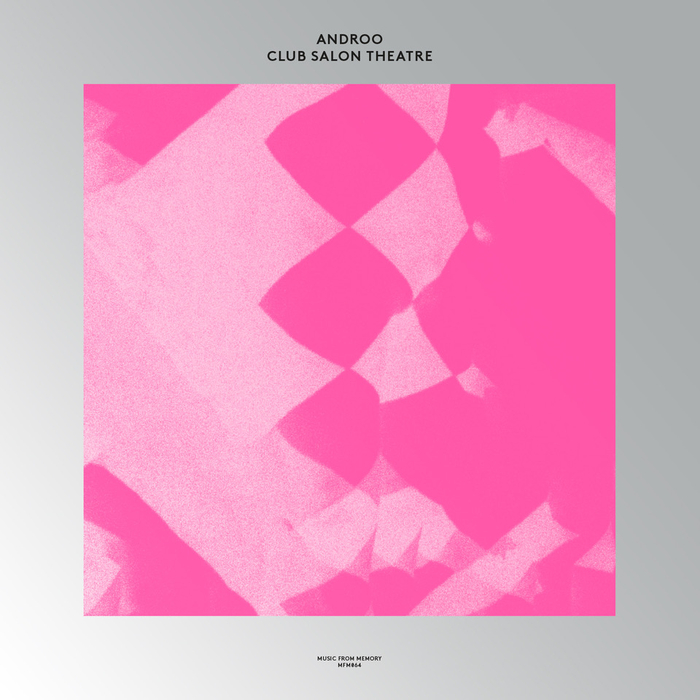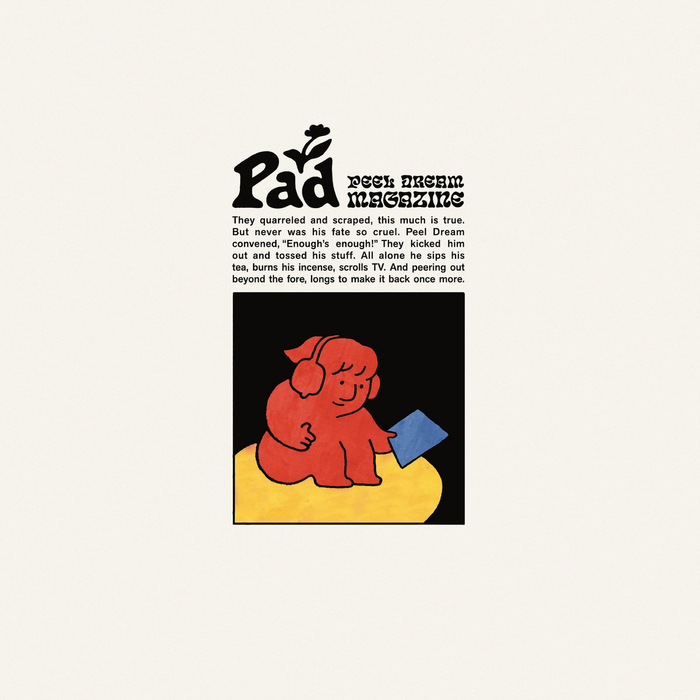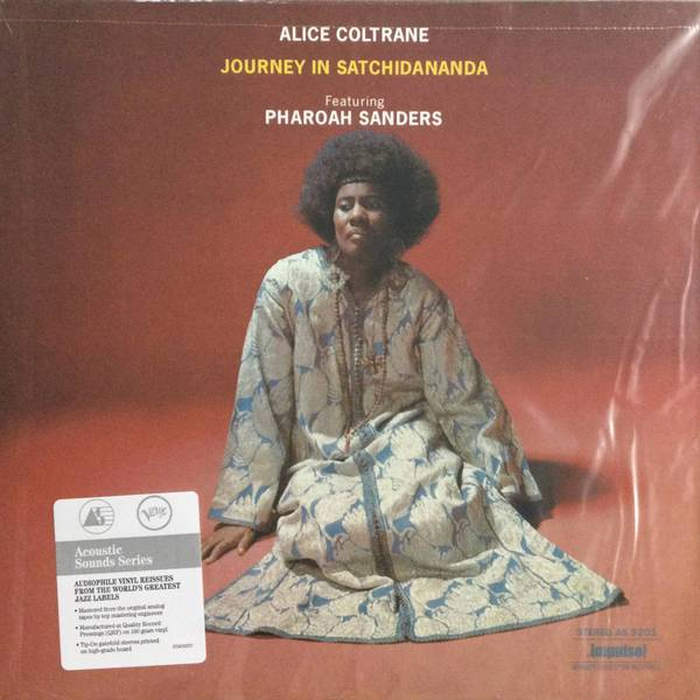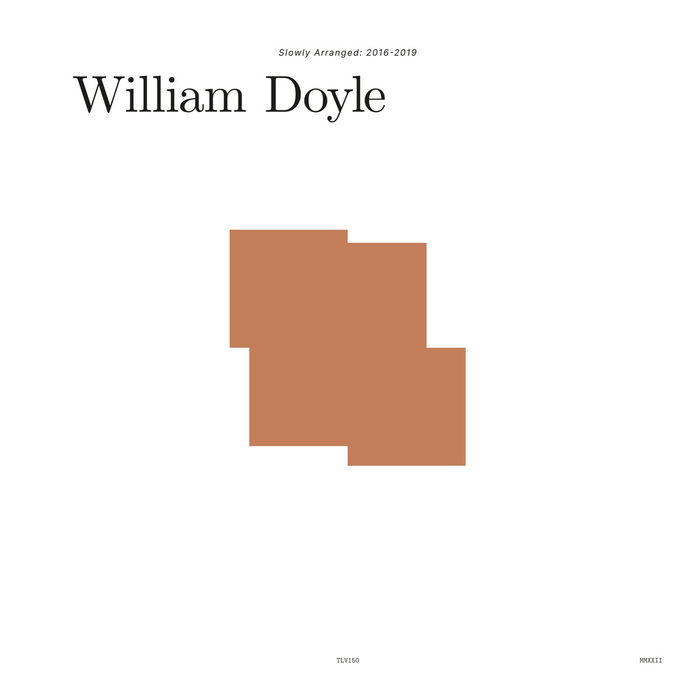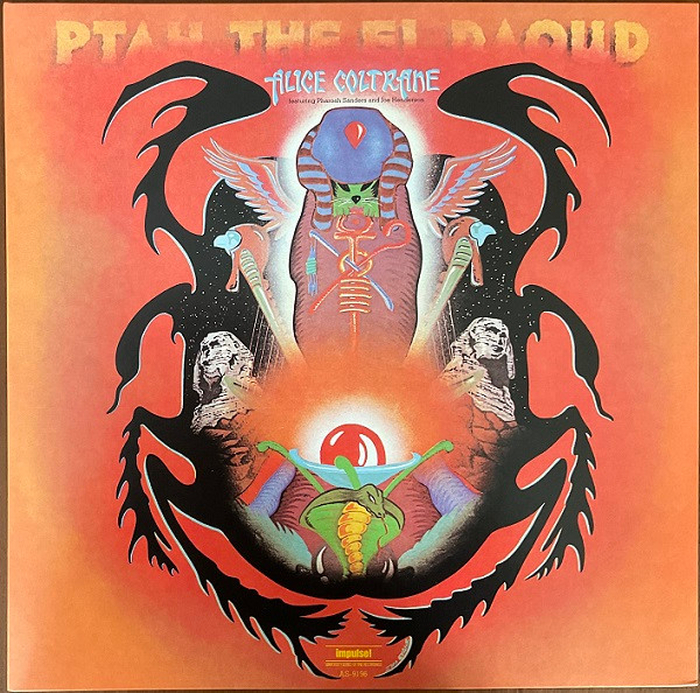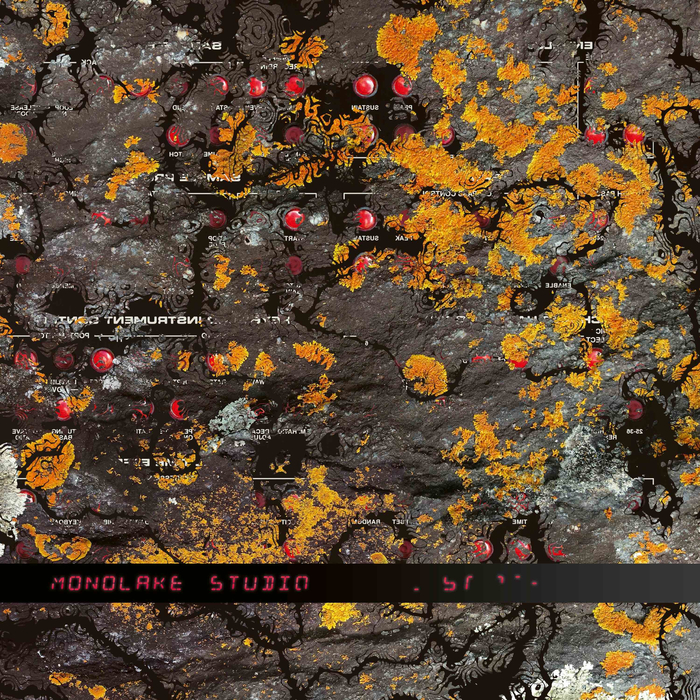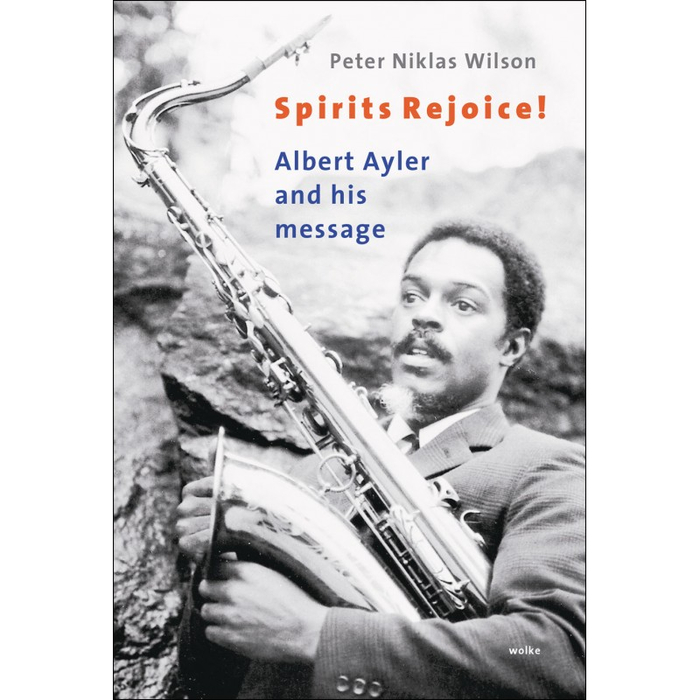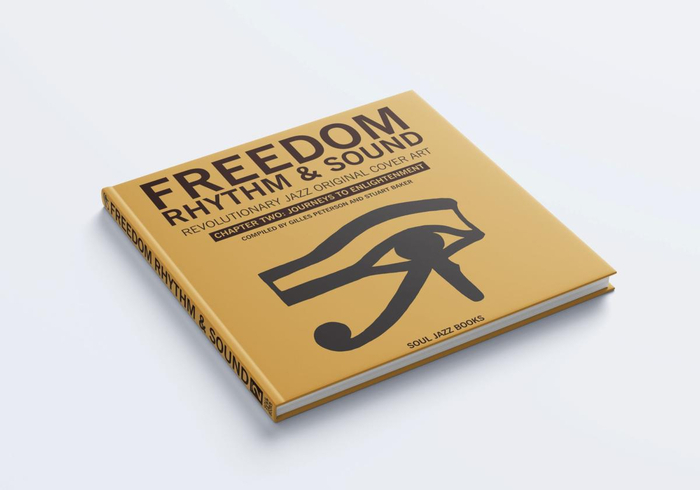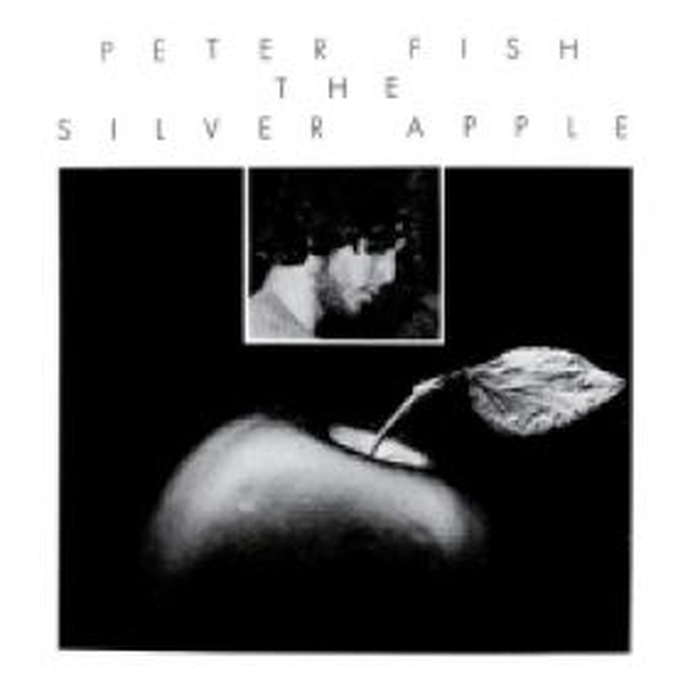Who can mark with certainty the moment a true spiritual awakening occurs? While on a walk in the woods, or on the road to Damascus? After taking a red pill? From Biblical days to modern times, popular culture likes to think of the transition as the flip of a light switch: click—instant illumination. But to those who chose to devote themselves to a life of contemplation, devotion and ultimately enlightenment, it’s never simply one fateful act, a before and after. Spirituality, to the deeply devoted, is a step-by-step process, along a not necessarily logical path. And if the dedication is steady and unwavering, that path never ends.
For Alice Coltrane, spirituality was her path and her destination—and it all makes sense in the long view, as her life unfolded from her first piano lessons to her first gigs as a professional musician, to becoming a wife, a mother, a band member, a widow. A bandleader and then a recording artist. A spiritual acolyte looking to the East for guidance, and eventually, the founder and leader of a community of Vedic worship and study on a generous tract of land in Southern California.
To grasp the logic of that sequence is to appreciate the inner strength and resolve needed by an African American woman in a more conservative era, and to understand why the release of the devotional music on this collection is so welcome and overdue. These songs—created in a specific time and place with a specific purpose in mind—reveal not only the spirit of a deeply spiritual and musically fearless woman, but one who was blessed with an abiding sense of generosity and kindness. As necessary as it is to hear the albums Alice Coltrane recorded in the 1960s and ‘70s—music upon which her deserved reputation rests today—one must also sit down, listen to, and absorb the music that she created in the 1980s and ‘90s, the music that comprises a largely unwritten chapter from the life of Alice Coltrane Turiyasangitananda.
“I was married to John Coltrane, and he…liked to meditate and we used to meditate together. I think it started with him, because I was born into a Christian family; I spent many years in the church. I was a pianist in the church in Detroit, where I am from. And it wasn’t so much a turning away from that, as it was a direction that I was given to follow.” – Alice Coltrane Turiyasangitananda, 2007
Before she was Alice Coltrane, she was Alice Lucille McLeod—born in 1937 in Detroit, the fifth of six siblings in a musical family, raised on church music and schooled in classical music from the age of seven. Her musical enthusiasm and facility on the piano led her to modern jazz. She sat in with groups led by saxophonist Yusef Lateef and guitarist Kenny Burrell, and sometime in 1959 or ’60, began to entertain the idea of traveling to Paris. According to Alice’s daughter and eldest child, the vocalist Michelle Coltrane, the attraction was both to Kenneth “Pancho” Hagood, a singer bound for Paris whom she had become involved with, and to the city itself.
She told me about Paris, how it was so hip in that era. Jazz musicians were going there, as it was an artistic, musical kind of hub. But her parents told her what she had to do if she wanted to go with Kenneth Hagood. She said, “I wanted to go to Paris with your father, and [her parents] said that she had to get married. I didn’t have to do that actually…” For her, the music definitely was first, not to discount her relationship, but knowing her as I did I’m sure that it was the drive to be involved in music. She was young.
“I think that was really her primary motivation—to go play some music with these elder statesmen of jazz and to learn from them,” says Ravi, Alice and John’s second son.
She was there making great music, hanging out with Bud Powell, playing with [saxophonist] Lucky Thompson and [drummer] Kenny Clarke. They’d do a weekly TV broadcast from this club and my mother was featured in a few of those, one where she plays the tune “Woody’n You”. Those clips are on YouTube now. That was the 22-year old Alice McLeod Hagood.
Inspired, busy, and soon pregnant, Alice made the most of her time in Paris. But in short order, her marriage fell apart and she returned to Detroit with her infant daughter, eventually joining a group led by vibraphonist Terry Gibbs. In 1962, Gibbs shared a run at New York City’s Birdland club with a group led by the well-known and hugely influential saxophonist John Coltrane, which brought the 25-year old Alice together with her future husband.
Their initial spark was fanned by a number of mutual experiences and passions. Both were steeped in the blues and were beboppers at heart, exploring and expanding the musical language that Charlie Parker and Dizzy Gillespie (and Powell) had introduced. Both came from church backgrounds and were intensely focused on healthy living: Alice a teetotaler and Coltrane having sworn off drugs and alcohol in ’57. Though his father had been a preacher and his grandfather a minister and community leader, Coltrane’s questioning nature had led him to unravel the singularity of his own Christian faith. He read the Baghavad Gita, the Quran and other religious books from different cultures. He developed a personal, spiritual path and a decidedly universalist philosophy that would take musical shape on the 1964 recording A Love Supreme. “All paths lead to God,” Coltrane wrote in the poem that graced the album’s cover. “No road is an easy one, but they all go back to God.”
Musically and spiritually, John Coltrane would prove to be one of the most influential forces in the jazz world of the 1960s and for generations after, swaying the direction of an entire musical community through his recorded music. Imagine the impact he must have had on the woman who was at his side day by day, who married him and bore his children, who played alongside him when his music pivoted towards a charged, avant garde sound that challenged even the most stalwart fans.
By 1966, Alice’s piano approach developed a startling new side, filled with sweeping, tide-like cadences, much like the approach she soon transferred to the harp; at the same time, she began to follow a spiritual curiosity veering towards Eastern paths, all influenced and encouraged by her husband’s example. Then, in July 1967, John suddenly succumbed to liver cancer and was gone.
Alice was just 30 years old, alone with four young children—Michelle, John Jr., Ravi and Oranyan. Yet she not only persevered, but stepped up her schedule and became more public than ever. Before 1968 ended, she learned to play harp, produced an album on the Coltrane Music label her husband founded, finished building and began recording in a home studio, and signed to Impulse Records, the company her husband had helped make famous. Her subsequent albums reveal an exciting musical mix related to, but sonically diverse from the music of John: blending the harp with traditional jazz and Indian instruments, and eventually a Wurlitzer organ with a special tone-modulating effect. Accompanied by an A-list of musicians who had performed with, or been influenced by her late husband—Pharoah Sanders, Charlie Haden, Ornette Coleman, Ron Carter, Carlos Santana—her recordings, from the late ‘60s through the 1970s, chart an expansive, twelve-year musical journey unlike any in the jazz world, before or since. Many of the titles alone suggest the music’s spiritual, mystical, even celestial ambitions: A Monastic Trio; Huntington Ashram Monastery; Ptah, The El Daoud; Journey in Satchidananda; Universal Consciousness; World Galaxy; Lord of Lords; Illuminations; . . . Eternity.
At the same time, Alice’s spiritual directive drove her ever deeper into spiritual study, steering herself to the Vaishnavism branch of the Vedic religion, which became her personal path. In ’69, the bassist Vishnu Wood introduced her to Swami Satchidananda; she began to study with him (and later Sathya Sai Baba) and became familiar with different devotional chants. In 1970, she accompanied Satchidananda on a five-week pilgrimage to India. There she found herself fully immersed in the sound and sway of an entirely different song tradition, eventually absorbing the music she encountered into her own. Upon her return to the States, Alice heard a calling that inspired her next, life-changing move.
“One of the directives given to me was to start the Ashram. I felt I could serve in any way that God wished. If He wants you to do charity work or humanitarian work or however He wishes to utilize you, maybe just talking or giving musical concerts is fine. Many people have a musical ministry. Whatever was ordered, I would have been happy to receive.” – Alice Coltrane Turiyasangitananda, Ascent magazine 2007
Motivated by divine messages received during meditation, Alice first relocated her family to California in 1972, then three years later established the Vedantic Center in her home in Woodland Hills, just north of Los Angeles. She balanced the duties of mother and spiritual leader, her two roles merging on Sundays when her children attended Sunday devotional services. Ravi Coltrane recalls,
Growing up in the 70’s I used to get that question a lot: “What religion are you?” I’d say, “I don’t know, but it’s a lot of fun.” It was something that we recognized as worshipping—singing and worshipping. We didn’t go to church with our other friends, we did it here at home and there’s some point where the kids get antsy to go out and have fun with their friends. It was the same for us. We were the same age as some of the kids in the ashram, like Surya. He could have easily been my younger brother. We called Alice “our mother.” We still do.
“We would all be there in our white clothes,” Michelle Coltrane adds. “We were all initiated and had spiritual names, so it was a family thing.”
I remember when she became a Swami, she put her name on the refrigerator to help remind us I guess because the name was really long. We couldn’t pronounce it, we were like, “What?” and we’d say something silly—normal kid reactions. Privately she was just a regular mother laughing at her kids silliness.
As we got older, Mother said we had a choice if we wanted to attend or not, so it started to fall off for us kids but it was never like one or the other. I did understand at that point that it was her duty and her calling and a priority.
In 1982, John Jr., Alice’s eldest son, died tragically in a car accident at the age of 18. Alice found comfort in the Vedantic belief in reincarnation and chose to celebrate his life and prepare to welcome his return. A year later, as her flock continued to grow, Alice invested in 48 acres of rustic property in nearby Agoura Hills and the center morphed into the larger Sai Anantam Ashram. Eventually, it would include a temple, buildings for living, cooking (vegetarian cuisine), eating, and other communal activities. For a few years in the late ‘80s, as part of its outreach efforts, it produced a weekly public access program on KTTV called “Eternity’s Pillar” and published books written by Alice through its own Avatar Books Institute.
The ashram may have benefited from its idyllic setting, yet it was not intended as a retreat from the modern world. Its members drove cars and had jobs. While some resided on the ashram, many did not, including Alice and her children who lived nearby in Woodland Hills. Her spiritual community was not exclusive, in any sense. It was largely African American, with many Latin, Caucasian, and Indian members as well. It did not follow any strict doctrine or liturgy; it opened its doors to all faiths, following John Coltrane’s example, while greeting the followers with the music of Vedic worship. All were welcome—om shanti.
It was in her role as swamini, bedecked in saffron robes and sandals, that Alice first brought her extensive musical experience to her flock—in formal and informal ceremonies on various evenings during the week, and especially on Sundays. The services leaned heavily on Vedic devotional songs that are still common throughout India and Nepal—bhajans (known for solo voice sections) and kirtans (more a group, participatory form). At their most basic, the lyrics praised Hindu deities by chanting their Sanskrit names and attributes. She developed original melodies from traditional tunes, and created sophisticated song structures with multiple sections of varying moods and meters. In a sense, she was elevating the folk form by bringing her own sensibility to the mix, to find an effective bridge between the steady beat and basic harmonic structure of those congregational chants, and her own improvisational, blues-based experience.
One can intuit that aspiration when Alice first brought the music of her ashram to the studio in 1976, recording the Warner Bros. album Radha-Krsna Nama Sankirtana, and Transcendence the year after. Many tracks feature group chants with call-and-response sections, all sung in Sanskrit. There were hand-claps and tambourines driving a steady rhythm emphasizing the backbeat. Alice hadn’t said goodbye to jazz or improvisational music, and her roots in the black church remained apparent in these new, devotional songs—an organ line leaning on a blues lick, a touch of melisma by the lead singer.
Turiya Sings (1982), Divine Songs (1987), Infinite Chants (1990), and Glorious Chants (1995) are the seeds of The Ecstatic Music of Alice Coltrane Turiyasangitananda, 10 selections from four albums that Alice produced and released herself over a thirteen-year period when she put her jazz career on hold and largely kept out of the public eye. All were initially released in audio cassette format exclusively, produced and distributed by its own Avatar imprint.
The albums were intended as a means for members of the ashram—many of whom sang on them—to carry the musical inspiration with them. No more than a few hundred copies were produced of each album; eventually they were made available for purchase by visitors and fans. As Alice’s retreat from the public scene only served to stoke curiosity and elevate her legend, these recordings became collector’s items, appearing on online auction sites, the subject of various blogs, written by enthusiasts who waxed poetic—and then some. “These swirling, meditative mantras are sometimes sung solo with serene fragility by Turiya and at other times rise in magnificent, gospel-like form from the Ashram Singers,” posted one blogger in 2011. “It is music made by a woman and her devotees who were in full, astonished love with the immense universe and the tranquility they found within it.”
“Chanting is a devotional engagement…Chanting can bring the person closer to God because that person is calling on the Lord. When one calls to even a friend, a mother, or any other relative in a kindly way, he gets the response, also in a reciprocal way.” -- Alice Coltrane Turiyasangitananda in liner notes to Divine Songs, 1987
Using one’s voice to chant or sing was a gesture Alice did not regard lightly. When asked about John Coltrane’s chanting the mantra “A Love Supreme” on his signature album, she replied: “I felt he was using the instrument God gave him. He had played man-made instruments all those years of his life, but this was almost like saying, ‘Lord you gave us an instrument that man could never make, and at least in this context, at least today, let me offer you praise through what you created in us to use.”
Sometime in early 1982, Alice surprised her followers, asking them to all bring personal cassette players and headphones to their early morning, outdoor meditation. She walked among them, placed a cassette in each player, and turned it on. Radha Botofasina, a pianist, harpist and singer who was one of Alice’s earliest adherents, remembers: “We heard these beautiful melodies and this voice. Was it a man, or a woman? We weren’t sure. Later we asked Swamini, and of course it was her. She was singing in this lower register we had never heard before. We asked her about that voice and she said she had meditated and the Lord had told her she must sing, and to use that voice. She said it sounded that way because it was neither male for female—it was the voice of the soul.”
In fact, no one at the ashram had heard her sing before. Her decision to record her voice singing a number of bhajans and other song styles, all original with some based on traditional melodies, was the inspiration for what became Turiya Sings, the first of the four albums she produced on her own. As is the case with many instrumentalists, Alice seems to have benefited from an innate sense of intonation, phrasing, even breath control. It’s part of their nature. Her voice is a centerpiece of Ecstatic Music, appearing on more than half of the tracks: leading call-and-response sections, or singing lead alone or with vocal accompaniment, revealing an impressive range of emotions and energy.
“Om Shanti” is plaintive and builds in energy, as her hushed voice echoes (and pre-echoes) itself. The ashram singers enter and the beat digs in with tabla, organ, and a long, soulful fade. On “Rama Katha”, against a minor-key organ pad, she recites more than intones, with an almost distracted air, until her double-tracked vocal appears towards the fade, a mournful duet. “Keshava Murahara” is sung with a trancelike, unhurried feel, the melody stretched like taffy as the Oberheim provides dynamic swoops and swells reminiscent of some progressive rock albums of the 1970s. “Er Ra”, a standout track on this collection and certainly the most unusual in form and effect, is a loosely structured vocal and harp duet in rubato feel. With a lyric in a long unspoken Egyptian dialect (how did she know how to pronounce the words?) it seems to capture Alice at a most unguarded moment, singing to herself, her own inner call-and-response: a disarmingly intimate, personal prayer.
Some tracks put the spotlight on other singers—like “Om Rama”, which features in its second half the gospel-infused voice of John Panduranga Henderson, who once sang in Ray Charles’s band and received his music training at the University of North Texas. The Tamil-born singer Sairam Iyer takes over the lead just past the eight-minute mark on “Journey in Satchidananda”; known for both his tenor range and falsetto, he’s well regarded in the Bollywood world. And that’s Radha Botofasina’s rich mezzo-soprano ringing out from the choral mix in the middle of “Krishna Japaye.”
The Ashram Singers enjoy a number of collective moments, some—like “Rama Guru”— focus on carefully arranged harmony parts, while other tracks, like the latter part of “Hari Narayan”, are intentionally loose and informal, voices chanting away on their own steam as if a fade out never quite happened in full. In some instances, like “Rama Guru”, and “Krishna Japaye”, they provide their own rhythm—handclaps, tambourines, and other percussion. Radha recalled there being up to 26 singers on some sessions, and that “those songs first came together in the mandir (temple) at the ashram. Then she used Studio B at Rumbo [Recorders] because it could fit a small orchestra. She would divide the singers into sections.
The strongest singers were in the front near the microphones. She would stand in front of the each section and sing parts for that section. The person in the front was expected to understand, memorize and help the other singers in the section get it right. For me, this was so much fun, because it was instant creativity with great vocal lines for the singers. She wanted us to blend together as one.
Baker Bigsby, Alice’s longtime recording engineer who worked on all the sessions represented herein, recalls using the digital technology of the day to help record them onsite to create what could be called scratch vocal parts.
I got Turiya a DAT recorder and she recorded the chants as they’d sing them at the ceremonies. Then she came into the studio with twenty or so singers, and we’d use the tape as a guide, and record the voices again, add them on top. It was beautiful, I didn’t hear words when we did that—just sound shapes.
Bigsby’s role on Alice’s devotional music did not stop at recording the tracks for each song, but in the mixing stage as well. It is easy to hear the studio craft—tape-editing, sound-on-sound, reverb—that Alice put into these recordings. Her approach to this music was obviously not intended to be more than mere documenting of ceremonial performances: based on them yes, but also drawing on decades of studio session experience to create a recorded product. Bigsby’s role was key to that process; the two had first worked together in 1971.
Turiya was my most steady client—we worked together for more than forty years, but it wasn’t like I was the spiritual music expert. I worked on all kinds of sessions—rock, pop. R&B. And you know, I didn’t see the music she recorded with her ashram family as being different from what she’d done before for Impulse and Warner Bros.—just a continuation, a growing process of what she started when she was with her husband.
Of course the music did get more spiritual and she went from purely instrumental music to the voices from the ashram. But the jazz was always there—I remember one time at Village Recorder while we were setting up, she went over to the piano and just started warming her fingers playing these bebop lines that were amazing! I’d never heard her do that before—I didn’t know she still had that in her repertoire.
Alice never lost the ability to sit at the piano and draw from a number of musical vocabularies—bebop, blues, old-time spirituals and hymns. It’s therefore intriguing that the prominent keyboard sound on these tracks comes from an Oberheim OB8—an analog synthesizer that hit the market in 1983. The choice reflects both an abiding fondness for the sound of strings—on these tracks the Oberheim is used more for mood than melody—and how she continued to be open to new instruments, textures, and sounds.
In her day, she had progressed from standard jazz instrumentation in the ‘50s and early ‘60s, to exotic acoustic instruments in the late ‘60s—like the drone-producing tambura, heard here on “Rama Rama”—and electric keyboards like the Wurlitzer or Fender Rhodes, her primary axes in the ‘70s. On these songs, Alice favors the Oberheim for its delicacy (the swell behind the strings on “Keshava Murahara”), or majesty (the open to “Journey in Satchidananda”); to build up to and signal shifts in the songs’ form (“Om Rama”), or to grab ears with a piercing, air-raid drama (“Rama Guru”).
Keyboardist Surya Botofasina, the son of Radha who was born into the spiritual community Alice founded, is intimately familiar with the sound of the Oberheim on these recordings (in fact all of her keyboards). Trained by Alice and later at the New School in New York City, Surya was still running around in shorts and sneakers when these songs were being recorded in various studios in and near the San Fernando Valley.
I was at the studio a lot because my mom was on just about every session— I used to go there all the time and I was too young then to participate but it was like Disneyland for me, all the best food and it was just fun. There were background vocal sessions for the Divine Songs [album], sessions for chants with a lot of people from the ashram so they needed larger rooms. I remember Swamini recorded at Red Wing studio in Tarzana and also Rumbo Recorders over there in Canoga Park, which makes sense because every place was about a half hour or less driving from the ashram.
In fact, from Alice’s home in Woodland Hills, all the studios she used—Red Wing or Rumbo in the Valley; The Complex or her old standby Village Recorders in West Los Angeles—were within easy driving distance of both her home and the ashram, and were frequented by many music groups active and famous at the time. It may be difficult to imagine such deep, devotional music being made in the same studio as pop groups and hard rocking ensembles, as Surya witnessed: “I remember Rumbo was where Guns N’ Roses were recording Use Your Illusion and I’d hear them, and see them hanging out. They had started to live in Studio A, while we were in Studio B, and it just cracked me up because we got in and out with our session. I could tell they weren’t done with their album, and I remember thinking, they’re not going to be done for a while...”
Listening how to the devotional music Alice and the ashram members recorded between 1981 and ’95, with the advantage of time and experience, Surya recalls how the ceremonial songs he grew up with still stands out from devotional music of a similar stripe.
With some of these bhajans, the more rhythmic ones with the hand-clapping, I know you can go to certain ashrams in India, or you can find recordings of them online, and hear other versions of these same songs but they just don’t sound like what was coming out of that one place in Southern California in the ‘80s. I definitely feel it’s the back beat, a strong back beat feel that on a very basic level there’s ‘Detroit’ written all over it, you know what I mean?
My wife and I went to hear Stevie Wonder at the Barclay Center and he was doing Songs In The Key Of Life album and when he played the song ‘Black Man’ which ends with the band just vamping on that groove at the end, singing ‘Who was the first man to perform a blood transfusion? Charles Drew—a black man!’, it suddenly had that same feel that a lot of the bhajans that we’d play at the Ashram had, the same kind of water was being sprinkled on it! I was asking myself, ‘Is it Detroit, since Swamini and Stevie are both from there? Is it just being in touch with the higher power that lets these master musicians express themselves so profoundly?’ I don’t know but whatever it is I know I love it and it will always be a part of me.
“Yes, I do get very deeply engaged spiritually in the music. Because it’s a spiritual language for me, it’s not a musical language. Music is a spiritual language for me, today. Throughout the years you go through academia with chords, and how to voice that and things like that. Today music is a spiritual language and I’m expressing, articulating deep feeling and deep experience in life, in spiritual life, in God.” -- Alice Coltrane Turiyasangitananda, WBAI Interview, 1988
“The spirit will not descend without song” goes the timeworn African saying, and forever it seems, music performance and spiritual expression have shared an intertwined legacy as old as humanity itself. It’s impossible to imagine any religious ceremony, from prehistory to the present day, without supplications soaring skyward on the wings of a song. It’s hard to think of any effective, soul-touching act of music-making that does not include a spiritual component.
When Alice Coltrane created these songs, she had been weaving together life, music, and a personal sense of connection and devotion for over thirty years: in studios, in a mandir, in her own home. “I’ve woken up in that house we grew up in, hearing this beautiful harp music playing at dawn, when your eyes are still closed and ears open first,” says Michelle. “This beautiful, tranquil, heavenly music.” Ravi recalls a similar afternoon routine he’d often witness.
I’d come home from school and she’d just be sitting at the organ playing hymns and things. It wasn’t like she was practicing or getting ready for a performance or a gig…it was like, you go home and your dad’s reading the paper, your mom’s reading a book or watching the television. That’s what that music was for her. It was this sustenance that was a part of her existence, her daily existence.
The same spirit that sustained Alice through her career permeates this music she left us—a spirit that resonates as strongly now, ten years after her passing in 2007, as when she first recorded them. Welcome to the world of Alice Coltrane Turiyasangitananda. Om shanti.
— Ashley Kahn, January 2017
Music historian and author
